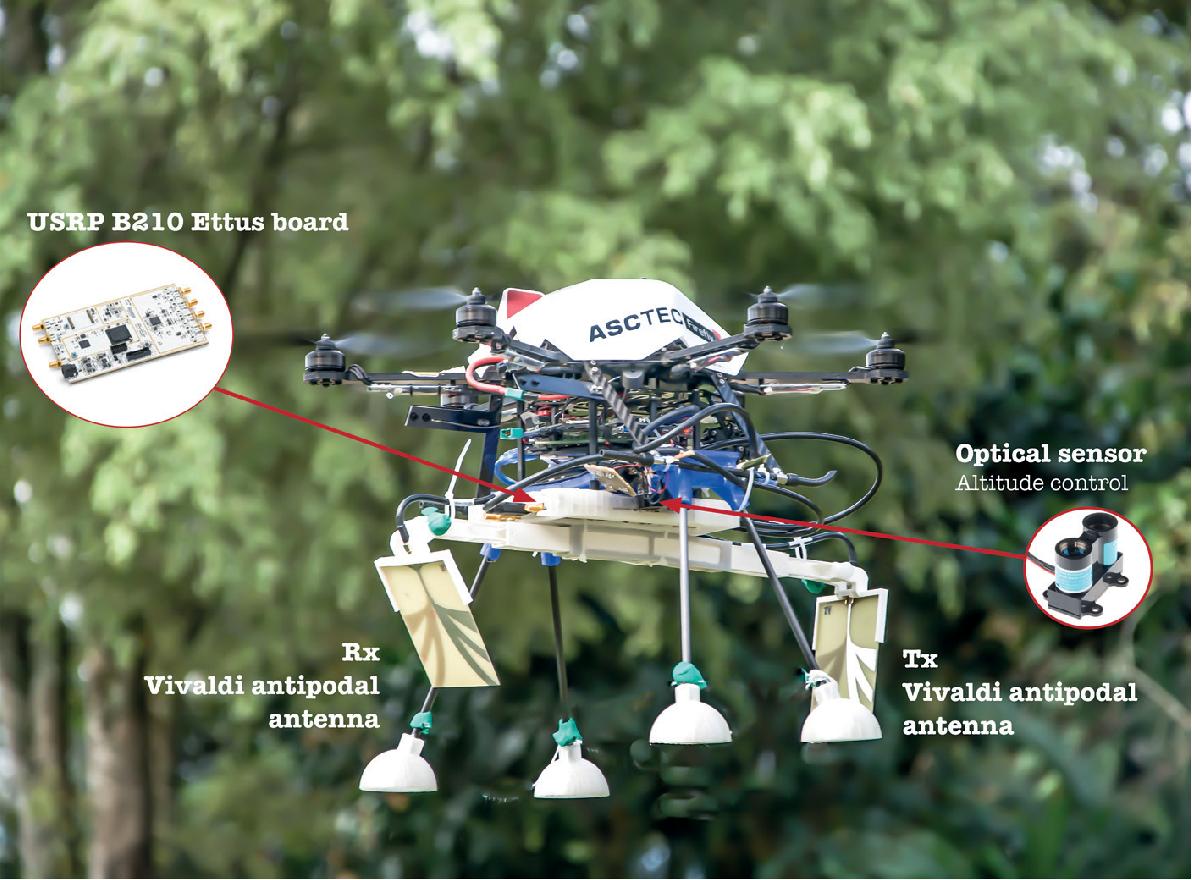I am currently working on a project to develop an airborne ground penetrating radar - a payload to be put on a drone - we are aiming to develop a synthetic aperture ground penetrating radar
So, us engineers have a technical term for that: It's called "a very cool project" ;) But, it's definitely ambitious.
As my background is in applied mathematics and not in anything practical, I want to partner with someone who has the relevant skills for this.
Quick remark: not a freelancer consulting site. We're here for engineering questions, not for HR questions.
So, I'll interpret your question as
What are the relevant skills in the field of low-altitude airborne groundpenetrating SAR that I need to acquire to be able to work on a projectwhich might involve hiring a very expensive engineer to help on the project?
So, first of all, of course ground-penetrating radars are both subject and tools in research at universities and national research institutions – for example, German Aerospace Center (DLR) has a whole department dedicated to Remote Sensing Technology, stuffed full with engineers and scientists that do this stuff. Universities have institutes doing various types of SAR based observations. I'd recommend you check their publications to see which topics they are involved in, and check their teaching to see which skills you need to acquire! (or hire)
Generally, as everywhere, you're building a complex system. From the list you've posted, I'd say you're missing a couple really important aspects:
- SAR needs very accurate flight control and modelling. As you can directly see from your math, it can only work if you can coherently add wavefronts, and that means your movement needs to be reliable enough between captures down to significantly sub-wavelength accuracy! So, you're missing skills in how to control flights, how to very accurately sense movement, and how to account for the errors that invariable happen. Luckily, you're the mathematician here, you get to do a lot of cool control theory (Laplace transforms, evolving matrix norms and numerics all over the place)!
- if you look to the previous publication from the authors you refer to, you will find this photo of a system:

Image source: Cerquera, Manuel Ricardo Pérez; Montaño, Julian David Colorado; Mondragón, Iván. 2017. "UAV for Landmine Detection Using SDR-Based GPR Technology". Robots Operating in Hazardous Environments. InTech. http://dx.doi.org/10.5772/intechopen.69738
You'll notice a couple of things
- antenna technology plays an important role
- mechanical construction is a non-negligible aspect of this
- geospatial modelling makes a difference, because someone needs to understand the data you're gathering
- The thing flies an SDR device, and a PC-style computer. You need to be able to power, boot and operate that in air. You need computer skills.
- The paper incorrectly identifies GNU Radio as Python program¹, but what they get right is that it's a tool to get the data handling of SDR problems right. You'll probably need to develop your own pulse compression, range cell migration mitigation and cross-correlation functionality. So, you'll need significant DSP skills, and experience with the type of SDR and software you'll use is going to be quite helpful
¹ It's not, all signal processing code was written in C++, you can however use it from Python, and I'm a bit more annoyed by this than I should be: this is really nice work they're doing! It's just that I've been the head GNU Radio maintainer and as someone who did his B.Sc. thesis on a very different type of radar, I know how many moving parts that one needs to understand can be in there, completely without involving flying around.

